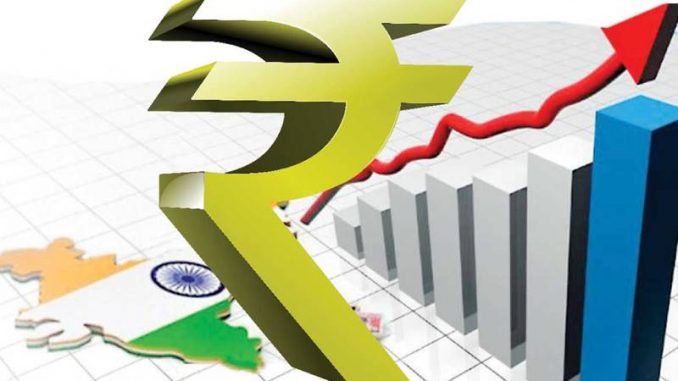For the first time in the post-pandemic period, India reached the top of Mint’s emerging markets tracker in March, the latest data shows. Strong manufacturing momentum, healthy export growth, and buoyant stock markets pushed up India’s rankings in the league table that tracks 10 large emerging markets across seven key parameters each month.
India may however find it difficult to hold onto the top rank in the coming months. For one, the rankings till March only capture gross domestic product (GDP) figures till the December quarter since most emerging markets have not announced their March quarter numbers yet. When they do, and the rankings are recalibrated, China could rise to the top once again. China is the only country in the list of emerging markets that has released March quarter estimates, recording a whopping 18% year-on-year growth. Other markets may struggle to match that figure, even on a low base.
India’s own rapidly deteriorating covid situation will act as a drag on the economy, and may encourage investors to look at other markets. Already foreign investors have turned net sellers in April after being net buyers in the previous months.
The situation India faces today bears an eerie resemblance to 2020. Last February, India was among the most attractive emerging market destinations globally. Then the global pandemic exploded, India imposed one of the world’s most stringent lockdowns, and its rank in the emerging market league tables came crashing down.
The script in 2021 hasn’t been very different so far. Even a month back, India was the toast of global investors, for having made a speedy recovery from last year’s lows. That also reflects in the March rankings, where India managed to climb to the top.
The rankings are based on a composite score that assigns equal weight to each of the seven high-frequency indicators considered here.
Speedy Recovery
The improvement in India’s economic indicators over the past few months encompass both real activity indicators such as manufacturing PMI and exports as well as financial sector indicators such as stock market capitalization.
Although the pace of manufacturing expansion, as recorded by the purchasing managers’ index (PMI) was slower last month than in previous months, India still recorded a higher score than any other large emerging market. India’s export growth was also much higher than that of any other emerging market, albeit on a low base.
India’s speedy recovery meant that it attracted more funds from global investors in the past three months than any other emerging market. The surge in foreign inflows pushed up India’s stock market capitalization and ensured that the rupee did not face much depreciating pressure even as the dollar strengthened. Till last month, the rupee was among the best performing emerging market currencies. The month-on-month rise in India’s stock market capitalization in March was also among the fastest among emerging markets.
Foreign investors bet on India because they believed that the worst of the pandemic is behind us, and that India would be able to vaccinate most of its population before a second wave came along. That bet is now turning sour, leading to a selloff. As a result, stock markets are tanking, and the rupee is among the worst performing emerging market currencies in April. Add to that the fear of persistently high inflation in the country, the threat of rising bond yields, and the outlook starts appearing a lot grimmer than it did a few weeks ago.
Road Bumps
It is possible that firms and individuals are better placed to deal with both the pandemic and the pandemic-induced restrictions than they were a year ago. Yet, certain high-contact industries will be hit hard by the new mobility restrictions once again. Both consumer and investor sentiments are also likely to take a hit. Job losses could once again rise, hurting demand.
Compared to other emerging markets, India seems to have been hit harder by the new wave of the virus, with daily covid deaths in the country second only to Brazil. Lockdown restrictions are also on the rise, and almost every day seems to bring in news of new restrictions in some part of the country. Unlike last year, a nationwide lockdown has been averted this time. But the memories of the harsh lockdown measures last year has already driven many industrial workers back to their native villages. The rising death count in mega cities such as Delhi and Mumbai could push more workers to migrate in the coming days.
If a large section of India’s population had been vaccinated by now, both the loss of lives and livelihoods could be prevented to a great extent. But despite being the biggest producer of vaccines in the world and despite administering more vaccines than most other countries, India’s share of vaccinated is not very different from those of other emerging markets, after accounting for India’s large population. The government has now opened up the vaccine market in the country but even if new vaccines start getting produced and sold in the country, only a fraction of the country’s population would be vaccinated in the next few months.
India’s pandemic management will be keenly watched by citizens and investors alike in the coming weeks and months.
Source: The Mint
You may also like
-
Trade Connect E-platform For Exports Is Single Window, Fast, Accessible And Transformational: Shri Piyush Goyal
-
Dot Simplifies Approval Processes For Telecom Licenses And Wireless Equipment
-
Coal Production and Supply Trends on Positive Trajectory
-
Union Minister To Release Booklets On Promotion Of Indigenous Species & Conservation Of States Fishes
-
2nd India-Japan Finance Dialogue held in Tokyo on 6th September, 2024
